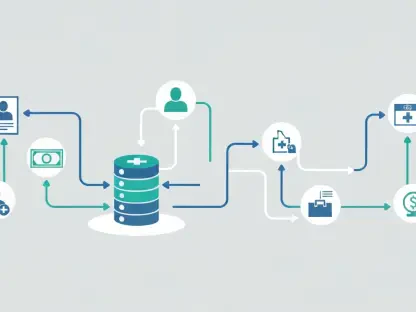The integration of AI tools like Microsoft Copilot into agile methodologies presents a unique opportunity to enhance productivity, streamline operations, and innovate swiftly. While the enthusiasm surrounding AI tools is palpable, successful adoption demands strategic adjustments to established agile frameworks. This article explores the necessary changes to achieve seamless integration and maximize efficiency.
The Impact of AI on Agile
Shifting Dynamics in DevOps, DataOps, and MLOps
The rise of AI tools necessitates the bridging of DevOps, DataOps, and MLOps. Traditionally, DevOps has focused on fostering collaboration between development and operations teams to enhance software delivery. However, with AI such as Copilot, there’s a need to integrate data management and machine learning operations seamlessly into this ecosystem. Incorporating DataOps ensures that data used by AI tools is accurate, timely, and of high quality, directly impacting the effectiveness of AI outputs. Similarly, integrating MLOps facilitates the management and deployment of machine learning models, creating a cohesive environment where AI and traditional software development can coexist productively. This expanded DevOps framework must address the collaborative nuances and potential friction points introduced by AI integration.
Effective training and cross-disciplinary knowledge sharing will be critical in achieving this synergy. The inclusion of DataOps and MLOps enriches the problem-solving capabilities within teams but also requires a deeper understanding of data handling and machine learning principles. To manage the newfound complexities, organizations need to foster a learning culture that emphasizes the continuous development of skills across various domains. Enhanced training in data theory and machine learning practices equips team members with the skills needed to navigate the intricacies of AI tools effectively. This comprehensive approach can mitigate risks, fostering a seamless interplay between AI and human intelligence.
Revamping Software Intelligence
Another pivotal adjustment is in the realm of software intelligence. Before deploying AI-generated code, a comprehensive understanding of both AI and standard application systems is fundamental. This entails not only ensuring the functional correctness of AI outputs but also safeguarding the architectural integrity of the entire software system. Software intelligence involves a thorough, holistic approach to managing applications, emphasizing the need to understand the interplay between different systems and code dependencies. By prioritizing architectural coherence, organizations can leverage AI to enhance productivity while mitigating risks associated with the rapid deployment of AI-created solutions.
Creating an environment that encourages an in-depth grasp of application architecture helps in preempting issues that may arise from AI integration. Developers must strive to balance innovation with foundational software principles to achieve long-term success. Deep-seated knowledge of the underlying systems is crucial to ensure that AI-generated solutions not only meet immediate requirements but are also reliable and scalable in the long run. The importance of software intelligence expands beyond mere functionality; it forms the cornerstone of a resilient and adaptive technological ecosystem. In this context, organizations should invest in tools and methodologies that facilitate a comprehensive understanding of their application landscapes.
Enhancing Compliance and Security Measures
Continuous Compliance and Proactive Security
Given the potential vulnerabilities introduced by AI-generated code, continuous compliance and proactive security measures are essential. Traditional periodic audits must evolve into ongoing, integrated processes that ensure security and compliance are woven into every stage of development. Security concerns, such as those highlighted by the U.S. Congress’s ban on AI tools, underscore the necessity for robust governance frameworks that keep pace with technological advancements. Embedding compliance and security into agile practices helps prevent breaches and aligns development processes with regulatory requirements. Proactive security measures include automated vulnerability scanning, real-time compliance monitoring, and incident response planning. These strategies not only protect the organization but also instill confidence in the reliability of AI tools.
Proactive security measures go a long way in mitigating risks. Real-time compliance monitoring provides teams with current insights, allowing them to promptly address potential vulnerabilities. Automated vulnerability scanning identifies and rectifies weaknesses before they can be exploited, while incident response planning ensures swift and effective remedy should a breach occur. Organizations that embed these practices within their agile frameworks are better equipped to adapt to evolving threats and maintain stakeholder trust. By continuously monitoring and improving security protocols, companies can ensure that their AI-driven initiatives remain both innovative and secure, minimizing exposure to potential risks and maximizing operational efficiency.
Augmenting CI/CD Pipelines for AI
The Continuous Integration/Continuous Deployment (CI/CD) pipeline must evolve to include AI-specific quality gates. These gates should rigorously assess code quality, performance, security, and user experience, ensuring that AI-generated solutions align with enterprise architectures and goals. Integrating AI into CI/CD practices extends traditional open-source principles of transparency, inspection, and adaptation. Such an approach allows for continual assessment and refinement of AI solutions, enhancing their reliability and effectiveness. Organizations should create dedicated teams to oversee these AI-specific quality gates, ensuring that outputs are consistently monitored and reviewed. This vigilance helps catch potential issues early, maintaining the integrity of the deployment process.
Furthermore, these dedicated teams should implement continuous improvement practices. By frequently revisiting and refining the AI-specific gates, they ensure that quality measures remain relevant and effective. The use of automated tools that integrate seamlessly with the CI/CD pipeline can streamline these assessments, providing real-time feedback and enabling rapid iterations. Continuous feedback loops, coupled with the agile principle of iterative improvement, create an environment where AI-generated outputs are consistently optimized. This proactive approach not only improves the quality and reliability of AI solutions but also ensures alignment with organizational objectives, ultimately driving productivity and efficiency.
Driving Efficiency through Measurement and Training
Measuring AI’s Impact with Specific KPIs
To justify the adoption of AI tools like Copilot, organizations need to measure their impact accurately. Developing AI-specific Key Performance Indicators (KPIs) provides clear insights into the benefits and challenges of AI integration, helping to refine strategies and improve outcomes. These KPIs should track various dimensions such as time saved, error rates, user satisfaction, and the overall impact on productivity. Regularly revisiting and adjusting these metrics ensures they remain relevant and reflective of AI’s evolving role within the organization. Transparent reporting of AI’s successes and shortcomings fosters a culture of trust and continuous improvement. By openly sharing results, teams can learn collectively and adapt more swiftly to the rapidly changing AI landscape.
Accurate measurement and reporting of AI’s impact enable organizations to fine-tune their strategies and optimize their use of AI tools. This process involves not only setting appropriate KPIs but also ensuring that data collection and analysis mechanisms are robust and reliable. Detailed performance metrics provide actionable insights, allowing teams to identify areas of improvement and success. Regular feedback loops, facilitated by transparent reporting structures, promote a learning culture where teams continually enhance their understanding and capabilities. This iterative approach ensures that AI integration remains aligned with business goals and adapts to emerging challenges and opportunities, driving sustained efficiency and innovation.
Skill Enhancement and Continuous Training
The inclusion of AI tools like Microsoft Copilot within agile methodologies presents a unique chance to boost productivity, streamline tasks, and foster rapid innovation. While excitement about AI tools is evident, their successful integration requires strategic modifications to existing agile frameworks to ensure they fit seamlessly. Such changes are crucial for achieving maximum efficiency and leveraging the full potential of AI.
In an agile environment, teams need to understand how AI can be woven into their workflows without disrupting the essence of agility. It’s not merely about adding a new tool; it’s about evolving the agile process to incorporate AI’s capabilities effectively. This may involve reassessing team roles, adjusting sprint goals, and redefining success metrics. Furthermore, training and ongoing support are essential to help team members get comfortable with AI tools and understand their benefits and limitations. Strategic planning, coupled with an agile mindset, will be key to navigating the transition, enhancing collaboration, and driving meaningful innovation.









